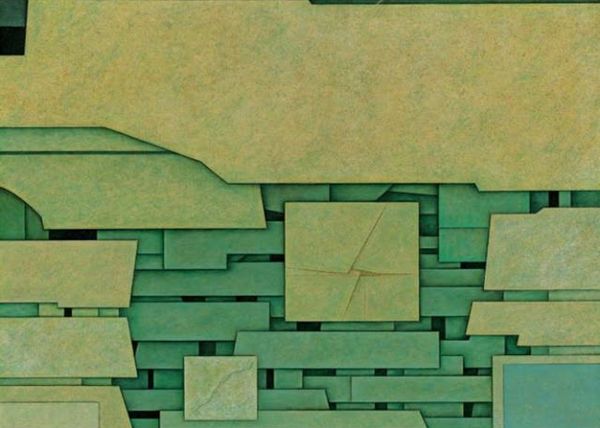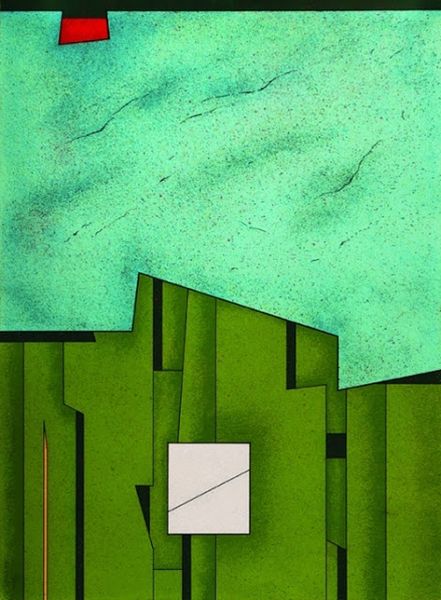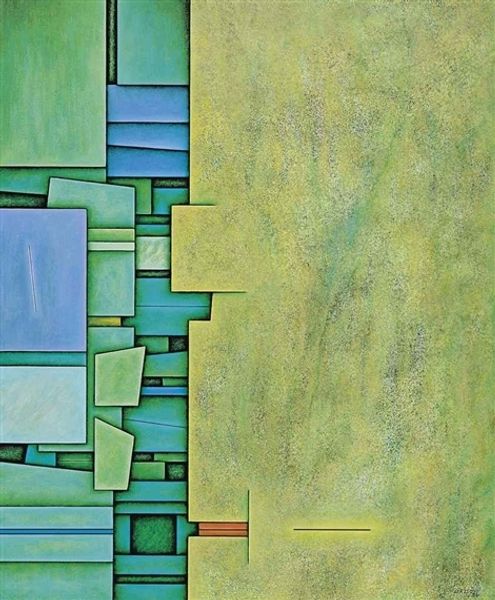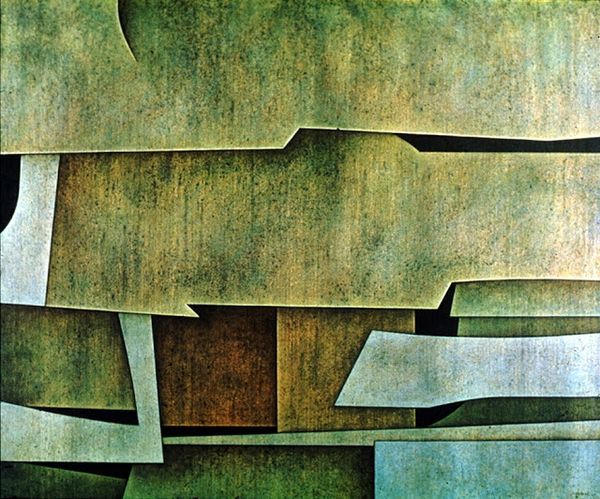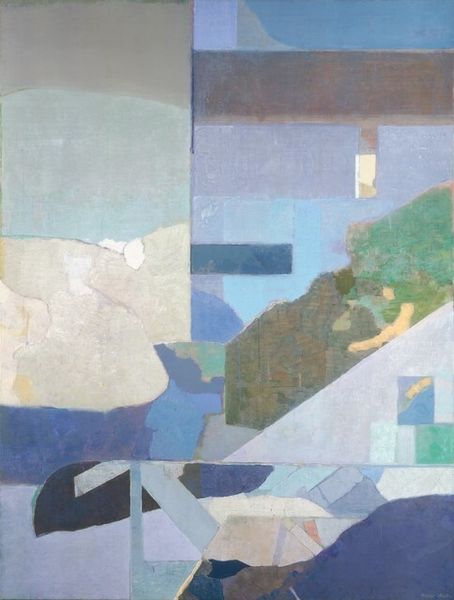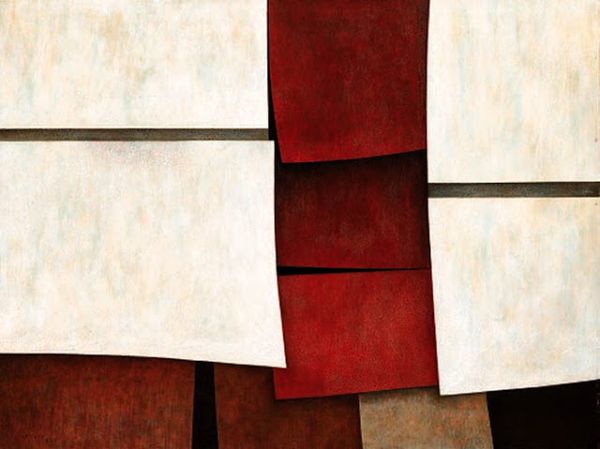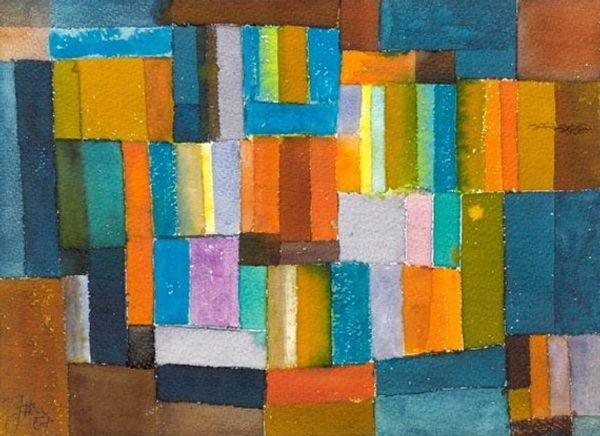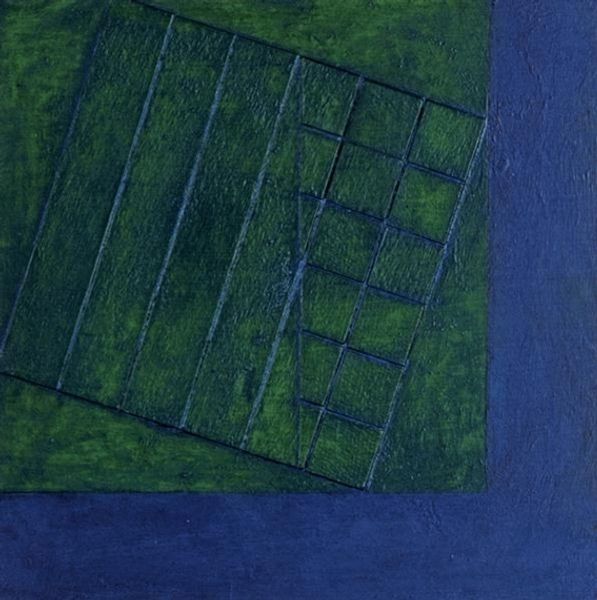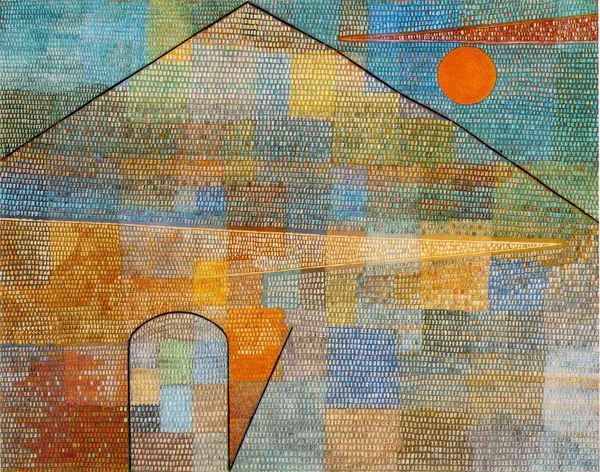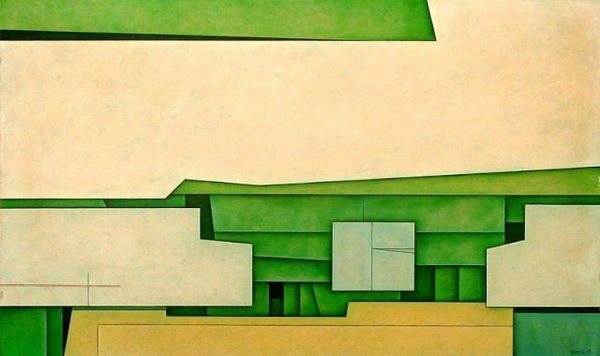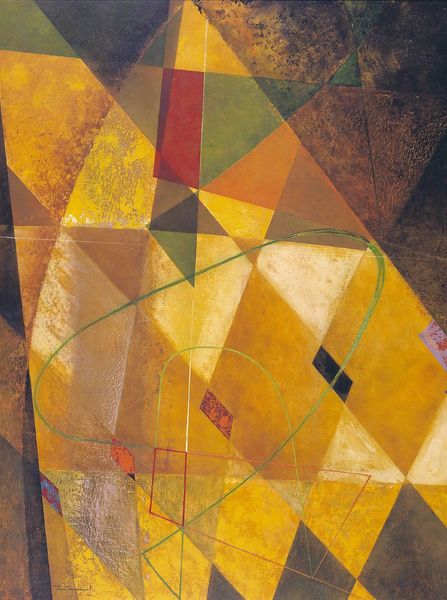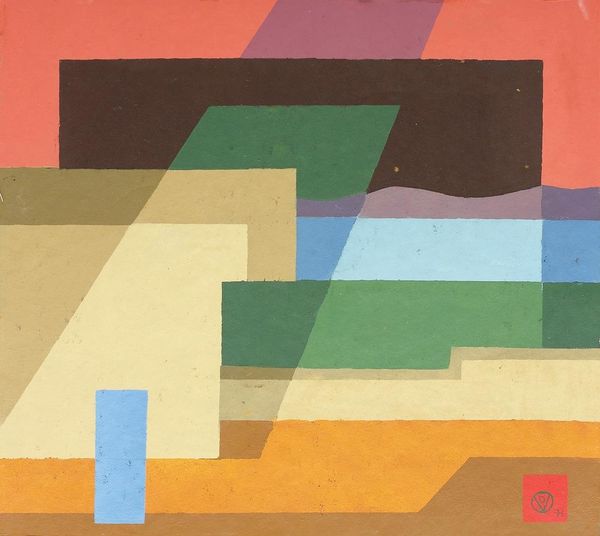
Copyright: Gunther Gerzso,Fair Use
Editor: We’re looking at Gunther Gerzso's "Verde-azul-blanco," created in 1978 using acrylic paint. The painting features stacked geometric shapes in shades of green and blue. It feels very architectural, almost like looking at city blocks from above. What do you see in this piece? Curator: This artwork, for me, becomes a powerful visual statement about the constructed nature of space and identity. Given Gerzso's background, how do you think his experiences during a time of significant social and political upheaval might have influenced this abstract style? Editor: That's a good question. I hadn’t really considered the political climate. It's interesting you point that out, as his previous work seems less overtly political. Curator: Consider the period, though: Abstract art itself can be a form of resistance, pushing back against traditional, representational forms often favored by authoritarian regimes. Do you notice how the layering creates a sense of depth, yet the colors remain somewhat muted, almost concealing? Editor: Yes, I do see that. The green and blue are quite somber. Perhaps they're meant to reflect the anxieties of the time? It does challenge any sense of easy interpretation. Curator: Exactly. And isn't it fascinating how Gerzso uses geometric shapes to evoke a feeling of urban landscapes? The subtle variations in color and texture, too, almost hint at a world just beyond our grasp. Do you find that interplay of the concrete and the intangible compelling? Editor: Definitely. It makes me rethink how abstraction can still convey very real social commentary, even without directly depicting it. Curator: It speaks to the profound ability of artists to engage with and respond to their worlds through abstract expression. There is real nuance and meaning there, even without it being plainly visible. Editor: Absolutely. This has really shifted my perspective. I appreciate how this forces us to look beyond the surface for deeper connections. Curator: And that’s exactly why we should always strive to understand the art through multiple lenses!
Comments
No comments
Be the first to comment and join the conversation on the ultimate creative platform.
